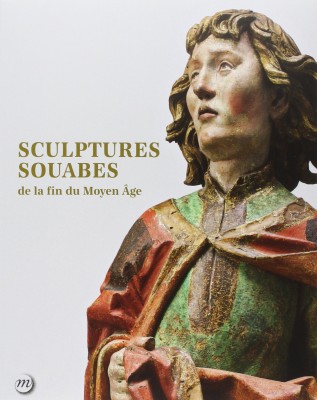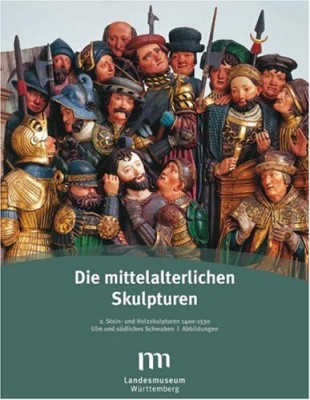Sweet, delicate, gentle are just a few of the epithets clinging to the current exhibition of late medieval Swabian sculpture at Musée de Cluny in Paris this summer

Swabia in the Middle Ages covered a larger region, than what it does today. At that time it approximately encompassed the land between the Vosges in the West and the Lech river in the East. To the South it was hemmed in by the Alpes and to the North by Franken. A large part of the region was covered in a forest, which today go under the name of Black Forest or Schwarzwald. Much of the former region now falls into the district of Baden-Würtemberg.
One of the traditional crafts was woodcarving, which was carried out by a mixture of local craftsmen and highly skilled artists. Witness to this are the so-called Longinus Crosses, which are still abundant in the countryside. 3-4 metres high they are often topped by a hipped roof, which resembles the roofs of the traditional Black Forest houses. Together with the riches of late medieval carved sculptures, which may be found in museums and occasionally also local churches, this tradition serves to characterise the characteristic art-form of the region.
Exhibiting thirty highly evocative sculptures this summer, a small, but very beautiful exhibition at the Musée de Cluny focus on this specific art-form. Visitors are invited to enjoy exquisite sculptures from 1460 -1530 – winged altarpieces, abundant Marys, saints galore. They are all here, witnessing to an art-form, which was dealt a fierce death-blow in the wake of the protestant reformation and its accompanying iconoclasm.
Of course the exhibition shows only a fragment of the riches, which may be explored in museums in the region (primarily Würzburg, Colmar and Ulm). However, the small and intimate character of the exhibition has made it a veritable must-see for medieval art aficionadas in Paris this summer.
The exhibition shows works by well-known artists like Niclas Weckmann (1481 -1526) and Daniel Mauch from Ulm (1477-1540) as well as Ivo Strigel (1430 – 1516) from Memmingen, Lux Maurus (1470 – ca. 1527) in Kempten and Jörg Lederer (ca. 1470 – 1550) from Kaufbeuren in the South. Most of the exhibits are currently in French museums; however a number of important works were borrowed from museums in Germany and Austria.
The exhibition is organised by The Musée de Cluny and La Réunion des Musee nationaux. However, it is inspired by the formal collaboration between Medieval Museums in Germany (Museum Schnütgen) and in Italy (the Bargello), which was recently confirmed by the exhibition on “The Middle Ages on the Road”. According to the curator:” It is a sign of the new politics of the Musée de Cluny, which seeks to focus on medieval art from all of Europe and not just France.”
VISIT:
Musée de Cluny – musée national de Moyen Âge
6, place Paul Painlevé
75005 Paris
01.04.2015 – 27.07.2015
SEE MORE:
Photos of the Sculptures have generously been made available in a collaboration between Musée de Cluny and Wikimedia
Sculptures souabes de la fin du moyen âge



CATALOGUE:
 Sculptures souabes de la fin du Moyen Age
Sculptures souabes de la fin du Moyen Age
de Damien Berné (Auteur), Collectif (Auteur)
RMN 2015
ISBN-10: 2711862631
ISBN-13: 978-2711862634
READ MORE:
 Die mittelalterlichen Skulpturen. Stein- und Holzskulpturen 1400-1530, Südliches Schwaben 1 – 2
Die mittelalterlichen Skulpturen. Stein- und Holzskulpturen 1400-1530, Südliches Schwaben 1 – 2
By Roland Hahn, Hans Westhoff, Claudia Lichte and Heribert Meurer
Jan Thorbecke Verlag GmbH 2007
ISBN-10: 3799580387
ISBN-13: 978-3799580380
ABSTRACT:
The Regional Museum Württemberg in Stuttgart houses one of the largest collection of wooden sculptural art from Swabia. The two volumes describes and catalogues this extensive collection of art from the regional centers of Ulm, Southern Swabia and Allgäu
FEATURED PHOTO:
Ten Religious at Prayer, atelier de Daniel Mauch, 1505-1510. Schloss Ambras Innsbruck, ©Tiroler Landesmuseum Ferdinandeum, Innsbruck
